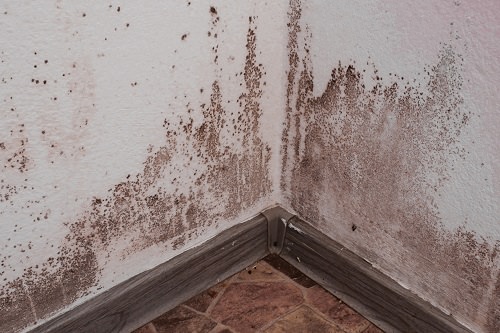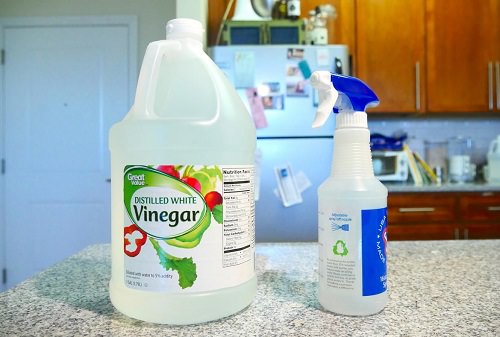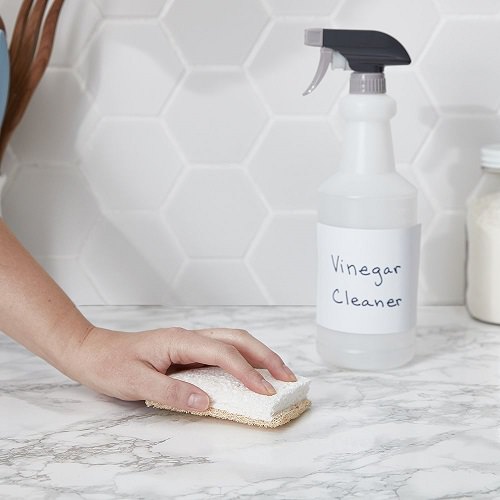Looking for a way to combat mold without the help of a service professional and chemical-filled products, then try out white vinegar for mold removal!
White vinegar is produced from the fermentation of rectified spirit, in which ferment is used to encourage the bacterial fermentation method. It includes 4-7% acetic acid and 93-96% water. White distilled vinegar offers a treasure trove of uses for washing, landscaping, healing, and cooking purposes. Let’s look at how helpful could white vinegar be for mold removal!
What Is Mold?
Molds are nanoscopic creatures that thrive in the darkest and dampest places. They can grow inside and outside as well. Outdoors, molds play a vital part in the ecosystem, whereas, indoors, they cause havoc on the house structure. These microscopic organisms prefer places having excess moisture and little lights, which are:
- Sinks, bathtubs, and showers
- Around leaky pipes
- Near windows
- Inside basements and attics
What Does Mold Look Like?
Molds are available in different shapes and textures. They are generally purple, white, green, black, and orange in color and have a gritty, cottony, or rough look. Molds not only cause cosmetic issues, but they can also damage your house foundation and contribute to various health issues. Therefore, it’s necessary to get rid of them quickly. There are many ways to kill and get rid of mold but let’s see how you can use white vinegar for mold.
White Vinegar for Mold
Thanks to white vinegar’s acidic nature, it kills mold on porous and non-porous materials easily. It’s capable of entering any porous surface to eradicate mold membrane and also eliminates mold’s surface growth. To enhance vinegar’s mold removing power, you can incorporate borax, sodium bicarbonate, or salt as a scouring agent.
Supplies
- White Distilled Vinegar
- An Empty Spray Bottle
- Small Funnel
- A Bristled Brush
- Warm Water
- Wet Cloth
Directions
- Pour full-strength white distilled vinegar into an empty spray bottle.
- Now, spritz a sufficient amount of vinegar on the mold affected space.
- Leave the treated area for one hour, allowing the white vinegar to work into the mold and break it.
- After that, again lightly mist vinegar on the troubled area.
- Next, take a bristled brush and scrub the space gently until all the mold is gone.
- Make sure to clean the brush while you work through the moldy area with warm water.
- Once you’ve dislodged mold from the surface, wipe it clean using a wet cloth, and allow the area to air dry.
- Repeat this mold removal process if needed.
Note: For removing mold from leather shoes, coats, accessories, and furniture, skip the scrubbing part from the above hack.
Precautions
While practicing the above vinegar method, make sure to follow these precautions to avoid any mishaps.
- Always wear good quality rubber gloves and a face mask to avoid the inhalation of mold spores.
- If you are allergic to mold spores, then don’t try the above hack for safety reasons.
- Avoid combining bleach with white vinegar as it creates toxic fumes.
- If you have a severe mold problem, it’s highly recommended to hire a service professional for help.
Where Not to Use Vinegar to Kill Mold?
White vinegar is not safe to use on some surfaces such as natural stone, cast iron or aluminum, and waxed wood because of its acidity. However, you can use it on porous surfaces, namely concrete, waxed wood, drywall, and unsealed tile. White vinegar is also considered safe to use on non-porous surfaces.
Mold Prevention Tips
After eliminating mold from your residence, it’s vital to take the below measures to prevent future mold outbreaks.
- As mold thrives in humid environments, run dehumidifiers to keep the moisture level to a minimum.
- Dry wet surfaces immediately to prevent mold growth.
- Repair broken pipes, fixtures, and showerheads.
- Improve your home ventilation by installing exhaust fans in the bathroom, kitchen, and other needed spaces.
- Fix damaged roofs and wall leakages to control the moisture levels.
- Clean your home on a regular basis.
- Leave your door and windows open while doing any moisture increasing chores.
- Clean and repair the roof gutters to avoid mold growth.
Other Uses of White Vinegar
Apart from its mold removing capability, white vinegar has other helpful uses as well:
- All-Purpose Cleaner
- Poaching Eggs
- Pickling
- Baking
- Rice Cooking
- Cheesemaking
- For Marinades and Dressings
Conclusion
Being a culinary staple for ages, white vinegar is also a potent mold removal agent. If the above article is not fruitful to you, then try the OxiClean method to do the trick.



